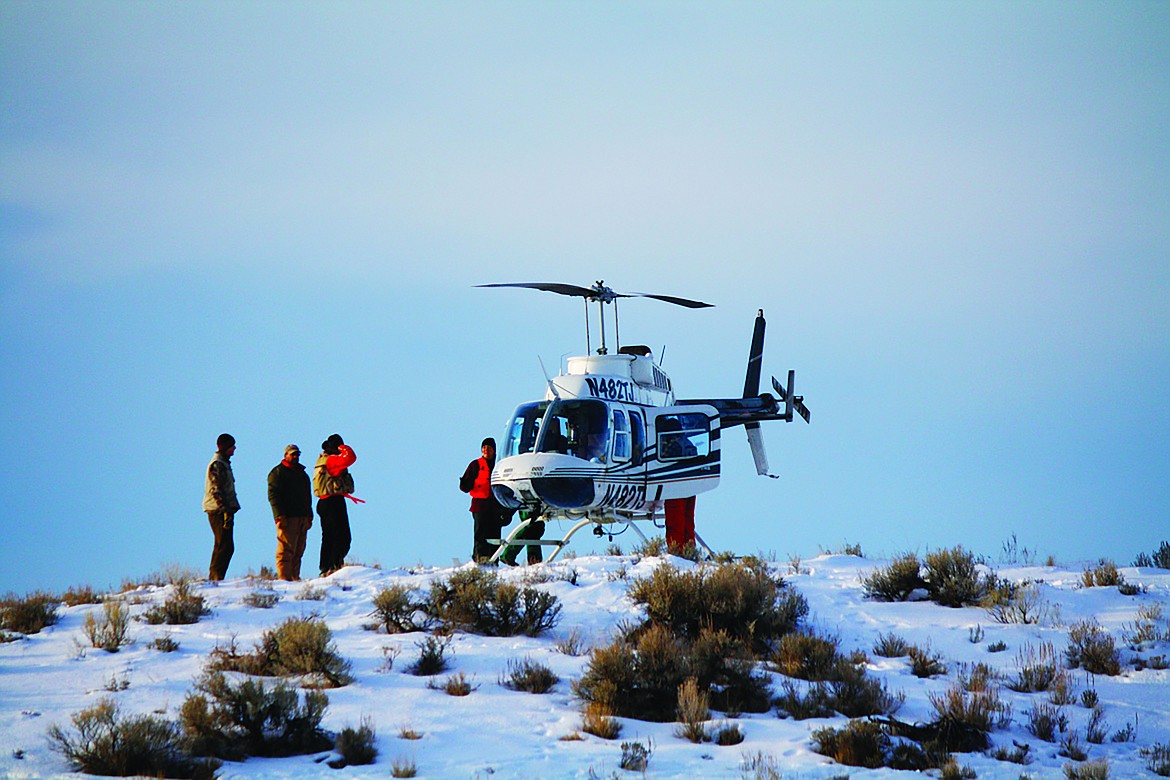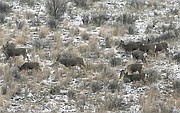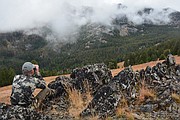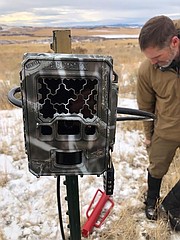State of Deer and Elk: Counting herds, and how hunters help through mandatory hunter reports
Deer and elk live throughout Idaho in habitats ranging from desert to mixed conifer forests, and a big part of a wildlife manager’s job is to estimate how many are out there.
What role do hunters play in that? More than you might realize. If each deer and elk hunter spends a few moments filling out a mandatory hunter report, they make a valuable contribution to wildlife management that can lead to more hunting opportunity, but more on that later.
Counting herds around the state
When we think of counting deer and elk populations, the first thing that comes to mind is biologists flying in helicopters and getting a bird’s-eye view of deer and elk herds when animals are concentrated on winter range.
But many hunters assume surveys happen every year in each of Fish and Game’s 99 game management units, which unfortunately is impossible.
Aerial surveys take a lot of time, personnel and resources. Fish and Game doesn’t own helicopters, and renting them costs tens of thousands of dollars for each deer or elk survey.
Because of that, Fish and Game must rotate their survey resources around the state, and most deer and elk populations typically get an aerial survey about every 5 to 6 years, and there are different kinds of surveys.
More than just the number of animals
There are actually two kinds of aerial surveys Fish and Game conducts: abundance surveys and composition surveys.
An “abundance” survey is designed to estimate how many animals are in a wintering population. To be accurate and consistent, Fish and Game biologists use a strict protocol that standardizes observer training, flight speed and altitude, and flight pattern.
Biologists also know they can’t see every animal due to vegetation cover and animal behavior, so there’s a correction made that’s been developed through research that calculates how many animals likely went undetected.
What do biologists do with the data?
Knowing how many deer and elk are in a population is useful to understanding how the herds are currently fairing, and what the long-term trends are.
The herd’s gender and age composition helps biologists understand if there is a healthy mix of animals with enough adults to produce the next generation, as well as enough young to replace the adults that may be harvested or lost to other types of mortality.
Composition surveys also help a wildlife manager know if they’re meeting management goals for certain game management units, for example, a controlled hunt unit where the expectation is to increase the number of older buck and bulls.
What role do hunters play in tracking deer and elk populations?
More than you might expect. Because there can be years between surveys, mandatory hunter reports help managers understand what may be happening in between aerial surveys.
Changes in what hunters harvest may reflect changes in the deer and elk populations, so if harvest changes dramatically in a season or two, it helps managers understand that something may have changed since the last survey, or that another survey is needed.
In recent years, only about 60 percent of hunters filled out their mandatory hunter reports, which meant biologists had to fill in those blanks with expensive telephone surveys, or use statistical estimates to round out the data, neither of which is as accurate as hunters taking a few minutes to fill out a report.
It’s a simple way hunters can do their part to help manage deer and elk.
So why ask about the number of antler points? Fair question. That’s another way of knowing the ballpark age of the bull or buck and another piece of information for the wildlife manager to assess if the current harvest is likely to be sustainable, or if more harvest could be allowed.
It’s also important to know if a hunter didn’t harvest, and even if they didn’t hunt, so everyone who bought a deer, elk or pronghorn tag needs to fill out a harvest report.
How better data means better hunting
The more accurate hunter reports are that Fish and Game receives, the better biologists understand what’s happening to deer and elk herds on the ground, and the quicker they can react with any needed management changes.
When biologists receive fewer hunter reports, they have to rely on estimates while also trying to filter out statistical biases.
For example, successful hunters tend to report at a higher rate than unsuccessful hunters, which means if you take the success rate of the 60 percent who reported and apply it to the 40 percent who did not report, you would likely end up with a higher harvest estimate than what actually occurred. That could lead managers to believe a herd was over harvested, and result in more conservative hunting seasons.
Biologists can correct some of those statistical inaccuracies, but with more hunters reporting, there’s less need for estimates. And if wildlife managers are unsure of the data, they err on the side of caution when proposing upcoming hunting seasons, particularly the number of tags available for controlled hunts.
Aerial surveys backed by hunter reports have for decades been the mainstay of data used by biologists across most of Idaho, but in thickly wooded portions of northern Idaho, aerial surveys are not as effective. In those places, hunter reports are the best tool wildlife managers have to gauge the health of the herd, so good data is even more critical.
Taking a snapshot of deer and elk
Fish and Game biologists and researchers started experimenting with remote cameras to estimate elk populations back in 2014, and that ground-breaking research has been used to estimate the state-wide wolf population for the last four years.
Fish and Game staff places hundreds of cameras in selected areas, then millions of photos are taken and sorted using artificial intelligence. Biologists then use that data and computer modeling to estimate a game population.
A simultaneous camera survey and aerial survey in winter of 2019 in a portion of southern Idaho came to almost identical numbers.
Fish and Game’s staff is currently applying their camera expertise to estimate deer and elk populations in portions of the Clearwater, Panhandle, Southeast and Magic Valley regions.
So far, it’s looking promising, and wildlife managers are hopeful it can be another way to estimate deer and elk populations more frequently without the time and expense of flying, but there’s more research to be done to fine tune it.
In the meantime, hunter reports remain the yardstick for managing white-tailed deer and elk herds in thick, woody areas where aerial surveys are not as effective.
While aerial surveys and hunter reports remain go-to methods for estimating deer and elk populations, they work in correlation with other information, such as survival of radio-collared animals and other methods of tracking wildlife.
They’re all part of the tools for effective wildlife management, and hunters will continue to be a vital part of it.
Learn more about the 'State of Deer and Elk'
See more about The State of Deer and Elk, including how Fish and Game tracks different deer and elk populations by understanding their movements and migrations.
Have a question about how Fish and Game tracks deer and elk populations? Email it to idahofishandgame@idfg.idaho.gov.
Roger Phillips is a public information supervisor for the Idaho Department of Fish & Game.







